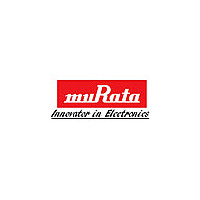GCM32DR72A225KA64L Murata Electronics, GCM32DR72A225KA64L Datasheet - Page 25

GCM32DR72A225KA64L
Manufacturer Part Number
GCM32DR72A225KA64L
Description
Manufacturer
Murata Electronics
Datasheet
1.GCM188R71C105KA64D.pdf
(50 pages)
Available stocks
Company
Part Number
Manufacturer
Quantity
Price
Company:
Part Number:
GCM32DR72A225KA64L
Manufacturer:
MURATA
Quantity:
640 000
Company:
Part Number:
GCM32DR72A225KA64L
Manufacturer:
MURATA
Quantity:
4 000
Part Number:
GCM32DR72A225KA64L
Manufacturer:
TDK/东电化
Quantity:
20 000
!Note
• This PDF catalog is downloaded from the website of Murata Manufacturing co., ltd. Therefore, it’s specifications are subject to change or our products in it may be discontinued without advance notice. Please check with our
• This PDF catalog has only typical specifications because there is no space for detailed specifications. Therefore, please approve our product specifications or transact the approval sheet for product specifications before ordering.
sales representatives or product engineers before ordering.
!Note
3. Reflow Soldering
Table 1
Recommended Conditions
Peak Temperature
GCM03/15/18/21/31
GCM32
!Caution
Pb-Sn Solder: Sn-37Pb
Lead Free Solder: Sn-3.0Ag-0.5Cu
Inverting the PCB
Optimum Solder Amount for Reflow Soldering
When the sudden heat is given to the components, the
mechanical strength of the components should go down
because remarkable temperature change causes
deformity of components inside. In order to prevent
mechanical damage in the components, preheating
should be required for both of the components and the
PCB board. Preheating conditions are shown in table 1.
It is required to keep temperature differential between the
soldering and the components surface ( T) as small as
possible.
Solderability of Tin plating termination chip might be
deteriorated when low temperature soldering profile
where peak solder temperature is below the Tin melting
point is used.
Please confirm the solderability of Tin plating termination
chip before use.
When components are immersed in solvent after
mounting, be sure to maintain the temperature difference
( T) between the component and solvent within the
range shown in the table 1.
Make sure not to impose an abnormal mechanical shock
on the PCB.
Atmosphere
Continued from the preceding page.
• Please read rating and !CAUTION (for storage, operating, rating, soldering, mounting and handling) in this catalog to prevent smoking and/or burning, etc.
• This catalog has only typical specifications because there is no space for detailed specifications. Therefore, please approve our product specifications or transact the approval sheet for product specifications before ordering.
Overly thick application of solder paste results in
excessive fillet height solder.
This makes the chip more susceptible to mechanical
and thermal stress on the board and may cause
cracked chips.
Too little solder paste results in a lack of adhesive
strength on the outer electrode, which may result in
chips breaking loose from the PCB.
Make sure the solder has been applied smoothly to the
end surface to a height of 0.2mm min.
Part Number
Infrared Reflow
230-250 C
Air
Pb-Sn Solder
Vapor Reflow
230-240 C
Air
Temperature Differential
Lead Free Solder
TV190 C
TV130 C
240-260 C
Air or N
2
[Standard Conditions for Reflow Soldering]
[Optimum Solder Amount for Reflow Soldering]
[Allowable Soldering Temperature and Time]
Peak Temperature
Peak Temperature
Temperature (D)
Temperature (D)
In case of repeated soldering, the accumulated
Soldering time must be within the range shown
above.
280
270
260
250
240
230
220
200 C
170 C
150 C
130 C
170 C
150 C
130 C
* GCM03: 1/3 of chip thickness min.
0
Infrared Reflow
Vapor Reflow
T
T
30
60-120 seconds 30-60 seconds
60-120 seconds
Preheating
Preheating
Soldering Time (sec.)
60
Continued on the following page.
Soldering
20 seconds max.
Soldering
90
!Caution
Gradual
Cooling
Gradual
Cooling
Time
Time
0.2mm min.*
in section
120
C03E.pdf
23
09.3.31
1






















